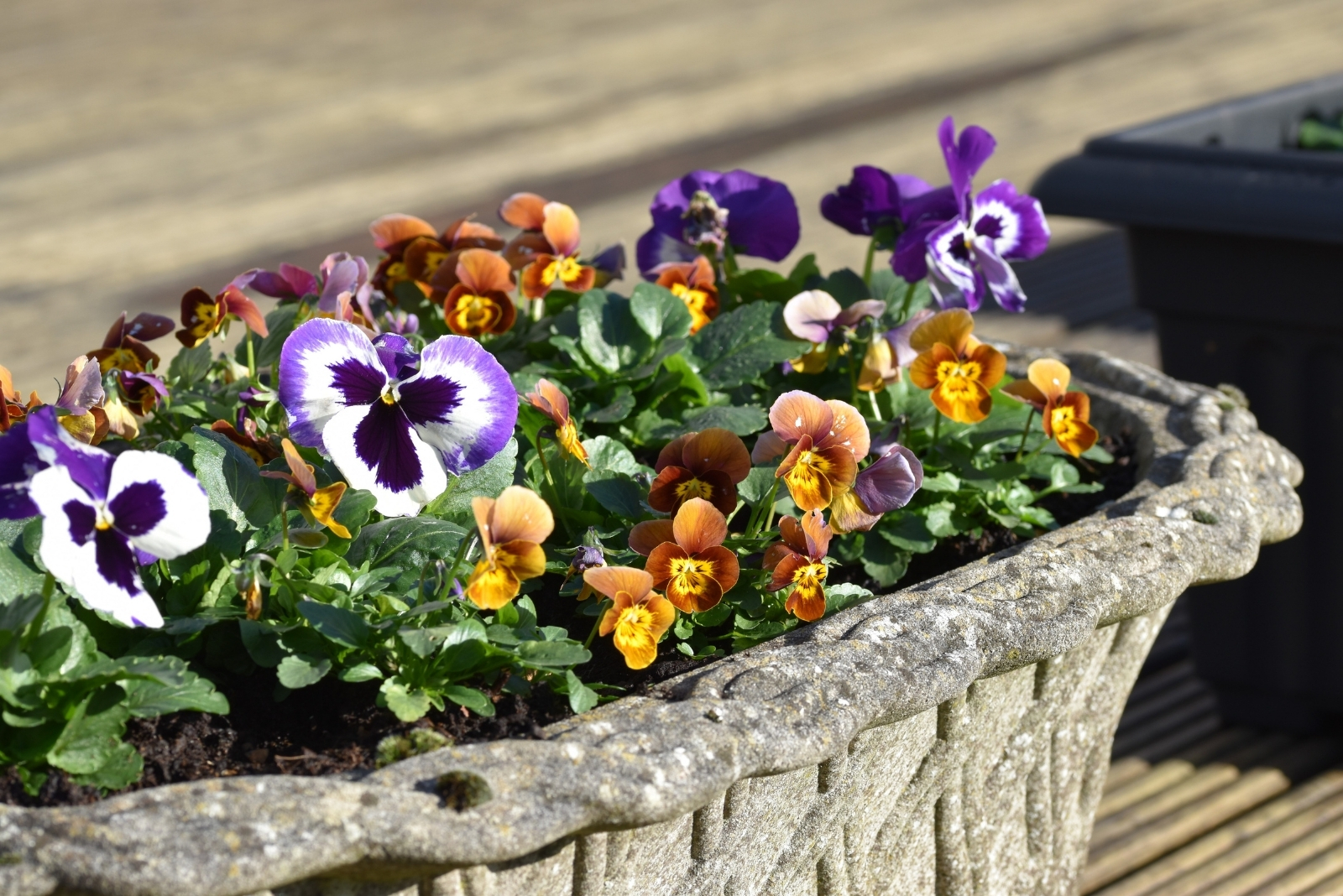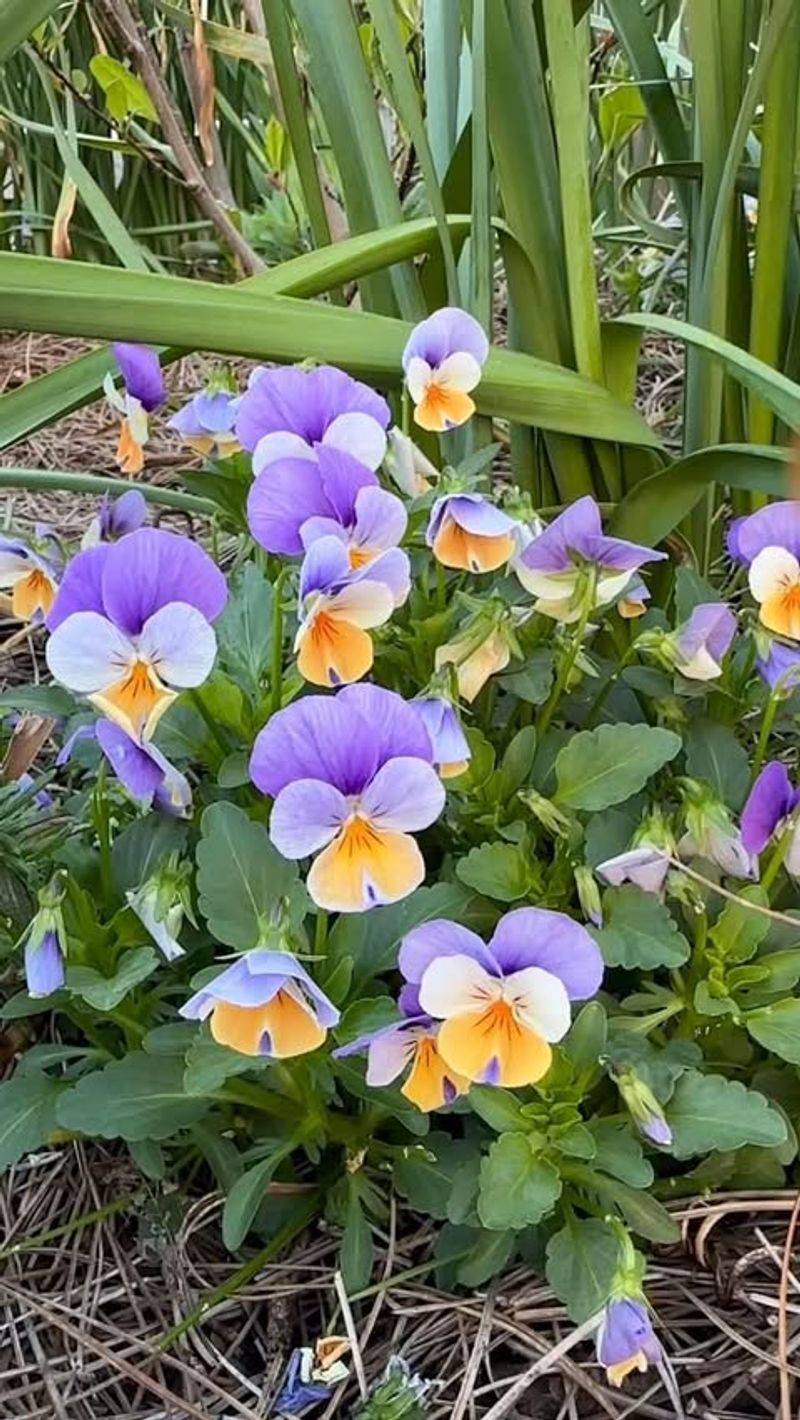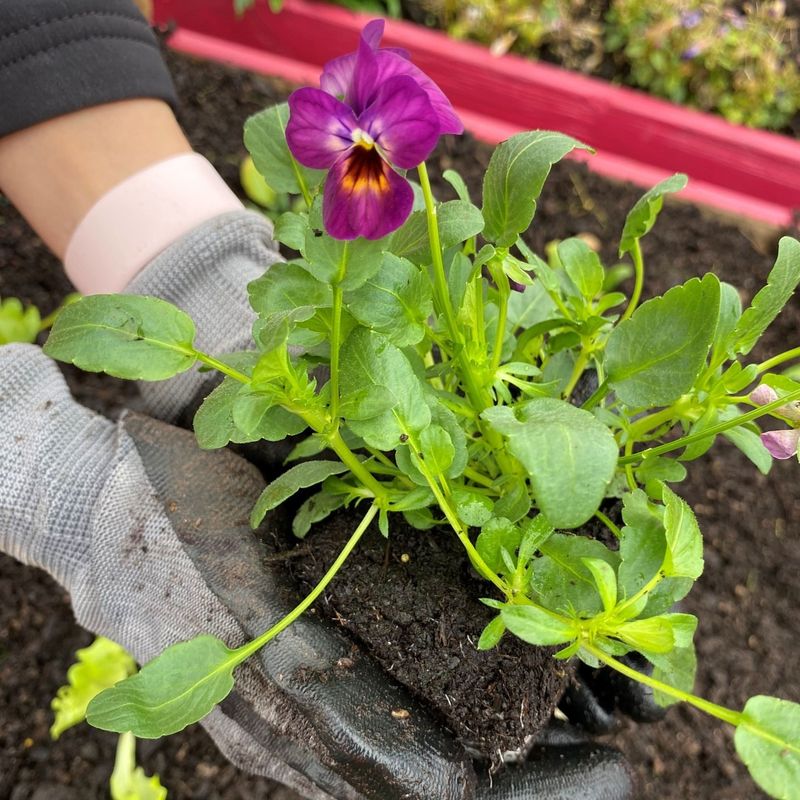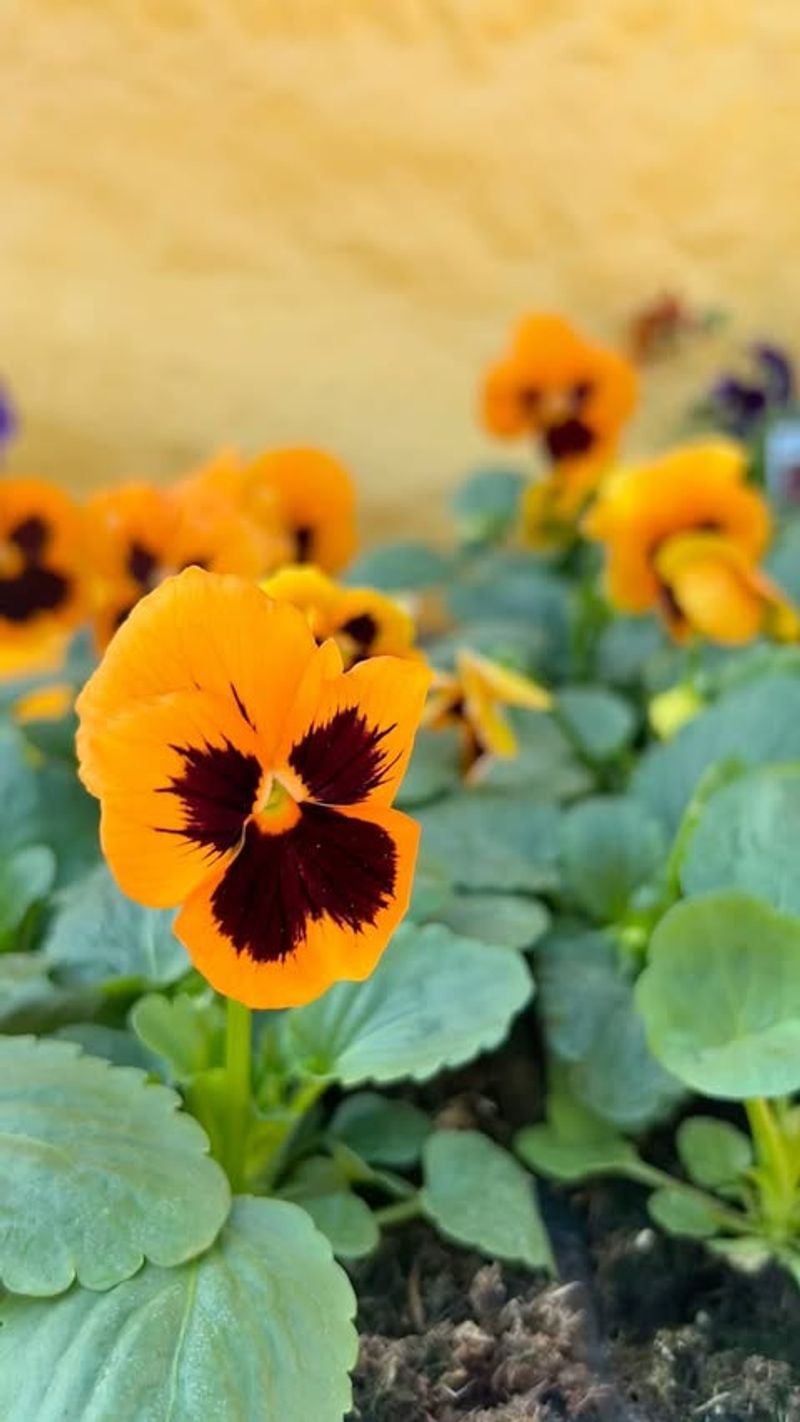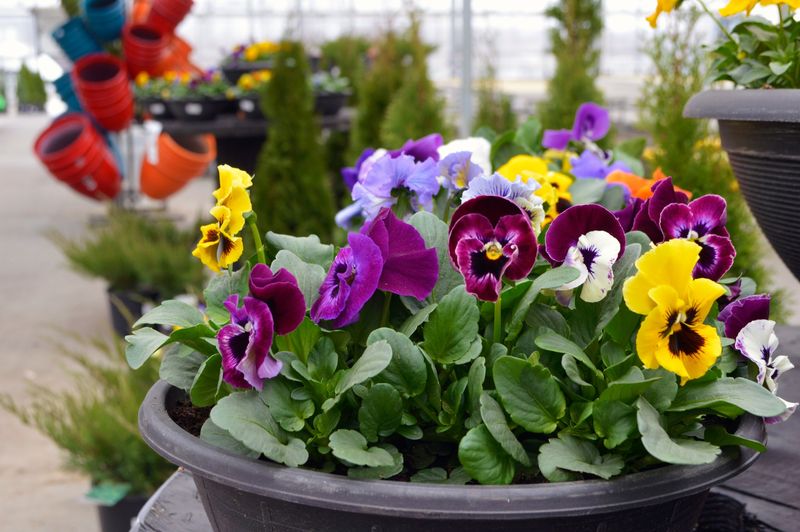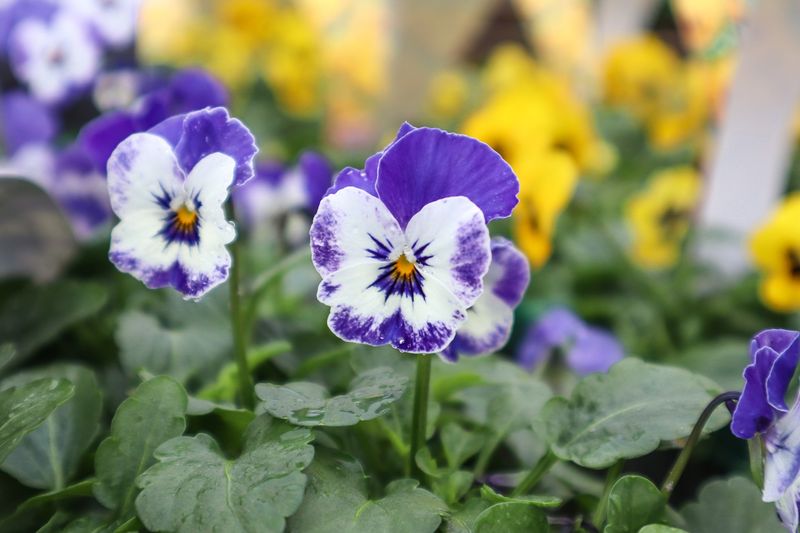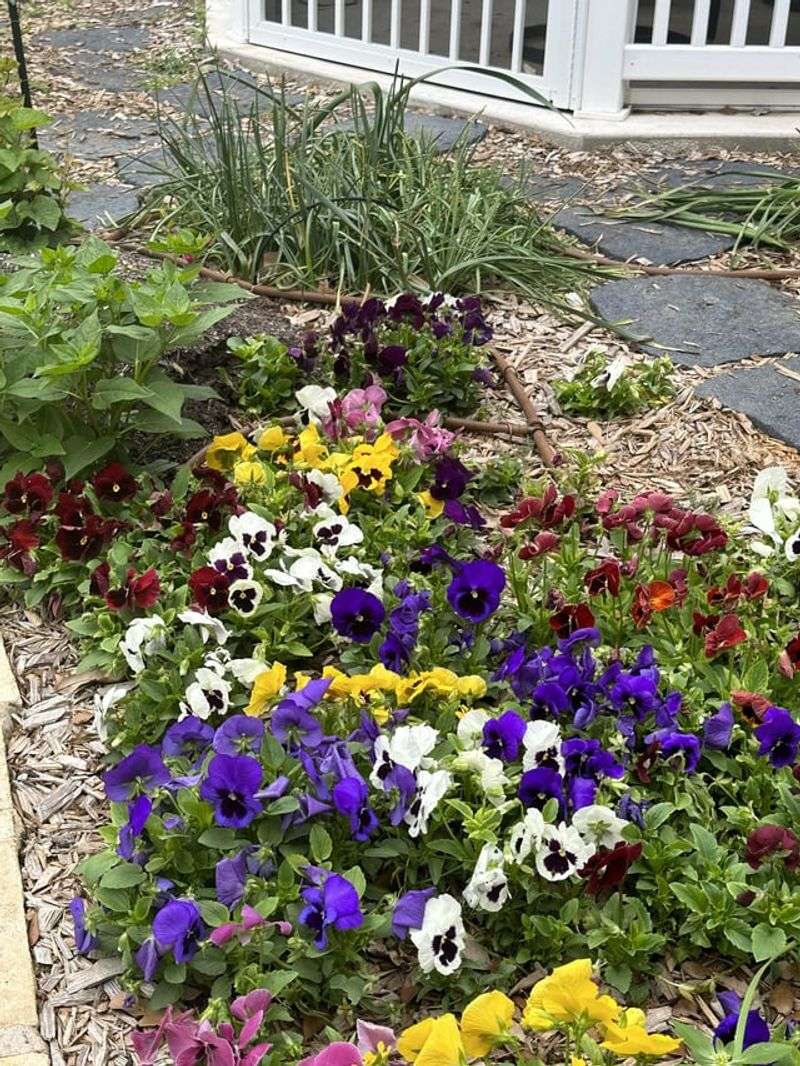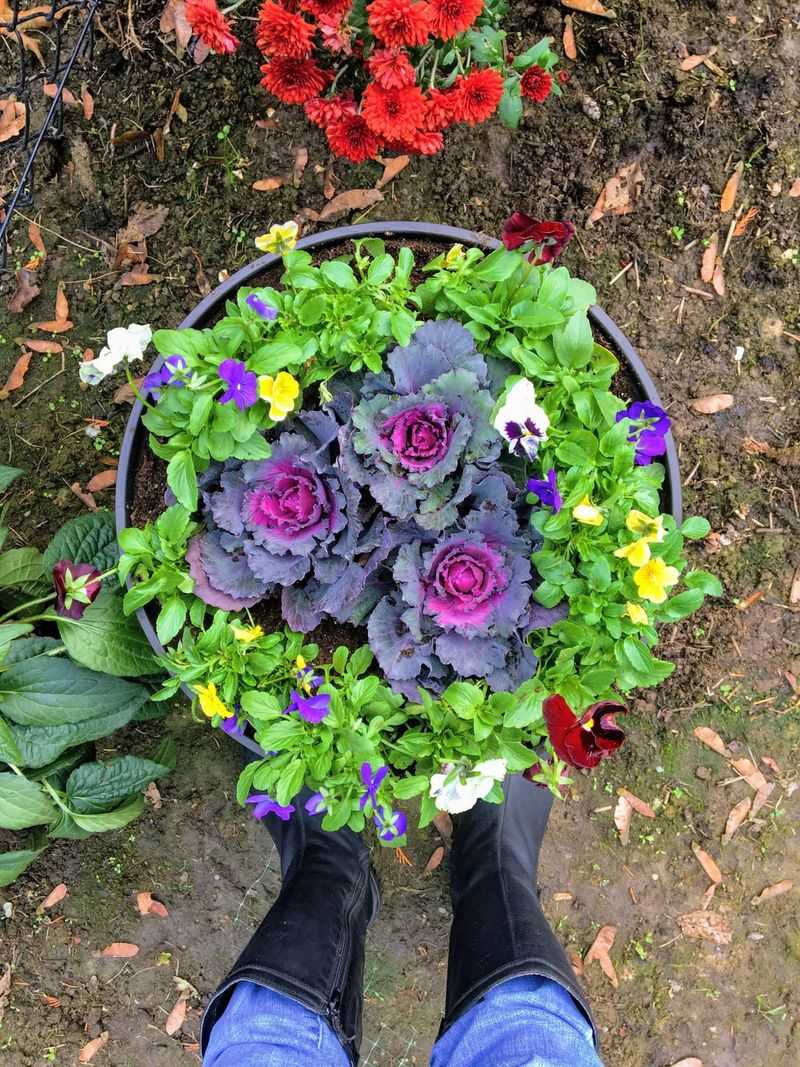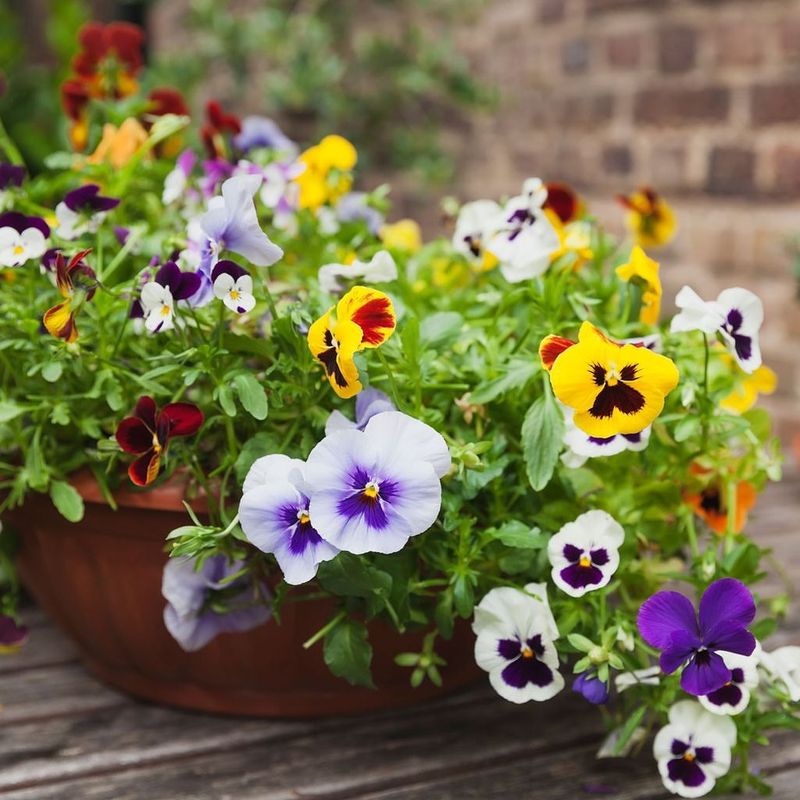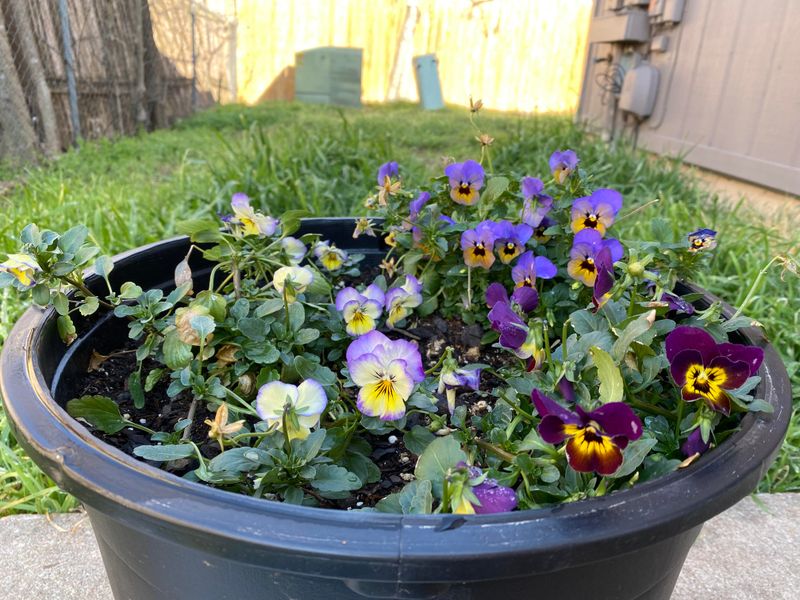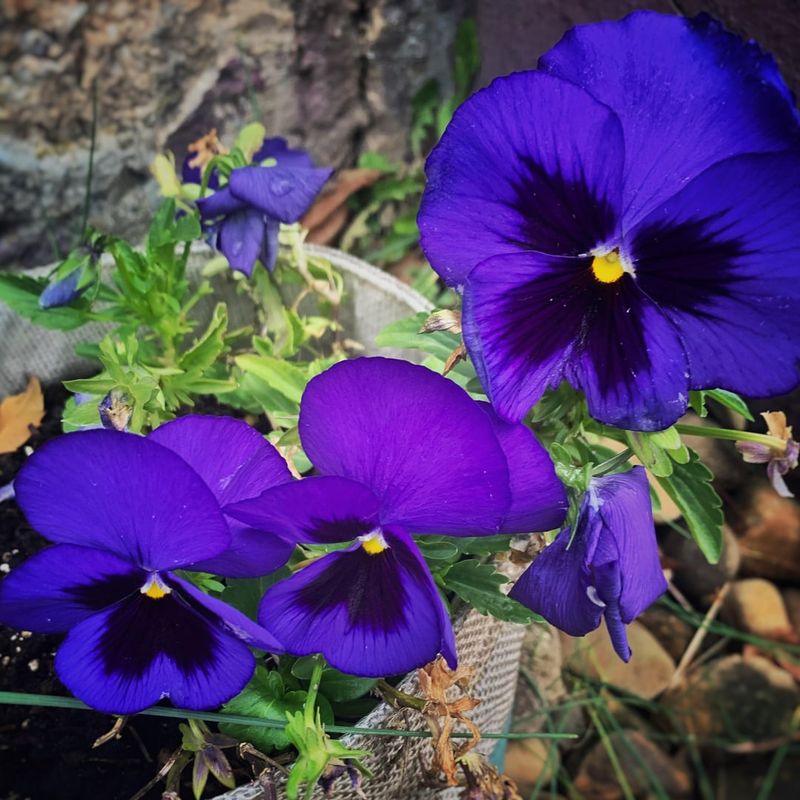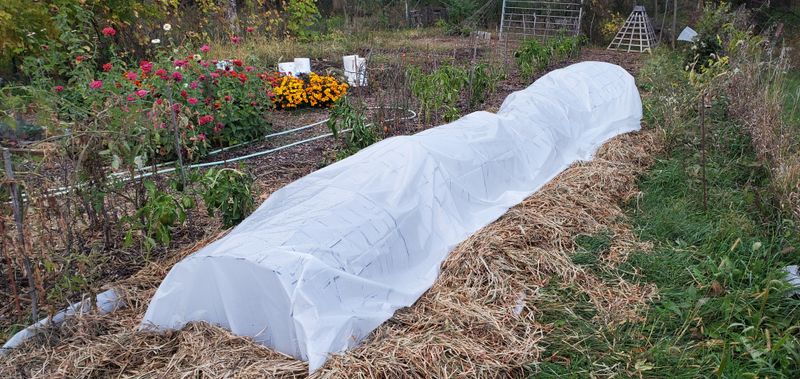Kentucky winters don’t have to mean dull, small pansies in your garden. I’ve discovered a few little tricks that help these cheerful flowers grow bigger and more vibrant, even in the cold.
Proper soil, careful planting, and a bit of extra care can make a noticeable difference. Watching them thrive when everything else is slowing down is incredibly satisfying.
With the right approach, your winter pansies can become the standout stars of your garden.
1. Timing Is Everything
Plant your pansies in early fall while Kentucky soil still holds summer’s warmth. This gives roots time to establish before the first frost hits.
Most Kentucky gardeners wait too long and miss this crucial window. Aim for September planting when days are mild but not scorching, and you’ll see dramatically larger blooms by December.
2. Soil Preparation Secrets
Kentucky’s clay-heavy soil needs serious amendment for pansies to thrive. Mix in generous amounts of compost and a cup of bone meal per square foot of garden bed.
The limestone prevalent in central Kentucky affects soil pH, so add sulfur to slightly acidify the mix. Your pansies will reward you with dinner-plate sized blooms when growing in this perfect soil balance.
3. Water Management
Kentucky’s unpredictable winter precipitation requires smart watering strategies. Water deeply once weekly rather than frequent shallow sprinkles, encouraging deeper root growth.
Morning watering prevents fungal issues common in the humid Kentucky climate. Always water at soil level instead of overhead to keep foliage dry, especially important during those mild winter days when temperatures rise unexpectedly.
4. Mulch Magic
Pine straw mulch creates the perfect microclimate for Kentucky winter pansies. Apply a 2-inch layer around plants but keep it from touching the stems directly.
The pine needles abundant in Kentucky’s eastern forests insulate roots from temperature swings while improving drainage. This natural solution prevents soil splashing onto blooms during Kentucky’s notorious winter rain-to-snow cycles.
5. Fertilizer Formula
Kentucky’s winter growing conditions demand specialized nutrition for pansies. Apply low-nitrogen, high-phosphorus fertilizer monthly through winter to promote flowering over leaf growth.
Fish emulsion works wonders in our bluegrass state’s winter gardens. Dilute it slightly more than package directions suggest and apply during midday when temperatures peak above freezing for best absorption.
6. Deadheading Technique
Remove spent blooms weekly to redirect energy to new flower production. Kentucky’s mild winter days between cold snaps are perfect for this quick garden maintenance.
Don’t just pinch the flower – follow the stem down to its base where it meets the main plant. Kentucky gardeners who master this technique enjoy continuous blooms from November through April rather than sporadic flowering.
7. Wind Protection
Kentucky’s winter winds can dessicate pansy blooms overnight. Create windbreaks using burlap screens on the northwest side of your pansy beds where our harshest winds originate.
The Ohio River Valley channels cold fronts directly into Kentucky gardens. Strategic placement of decorative brush piles or evergreen branches can shield delicate pansies while adding rustic charm to winter landscapes.
8. Companion Planting
Interplant ornamental kale among your pansies for stunning contrast and mutual protection. The kale’s sturdy structure shields pansies from Kentucky’s ice storms while creating visual interest.
Aromatic herbs like rosemary and thyme deter pests common in Kentucky’s mild winter days. This companion strategy creates a microclimate that traps heat and elevates soil temperature around your precious pansies.
9. Strategic Placement
Plant pansies along south-facing walls that absorb Kentucky’s winter sunshine. The radiant heat creates a microclimate several degrees warmer than surrounding areas.
Kentucky’s limestone walls are particularly effective heat sinks. Position your pansy beds where they’ll catch morning sun but receive afternoon protection during January’s harshest weather, when even our hardy blooms appreciate extra warmth.
10. Container Considerations
Choose thick-walled ceramic pots that insulate roots from Kentucky’s temperature fluctuations. Dark-colored containers absorb precious winter sunshine, keeping root zones warmer.
Elevate containers on wooden blocks during Kentucky’s ice events to prevent freezing. This simple trick allows excess moisture to drain freely while protecting pots from cracking during our notorious freeze-thaw cycles.
11. Variety Selection
Choose ‘Delta’ and ‘Matrix’ pansy varieties specifically bred for Kentucky’s climate zone. These cultivars produce dramatically larger blooms and withstand our unpredictable winter weather.
Local Kentucky nurseries often carry regional-specific varieties not found in big box stores. The ‘Cool Wave’ trailing pansy performs exceptionally well in our state’s winter landscape, creating cascades of color even in January.
12. Overnight Protection
Keep floating row covers handy for unexpected Kentucky cold snaps. This lightweight fabric provides 5-8 degrees of protection without smothering plants or blocking light.
Many Kentucky gardeners overlook this simple solution during our unpredictable winter weather. Apply covers before sunset when temperatures threaten to dip below 20°F, removing them promptly the next morning to prevent heat buildup.

